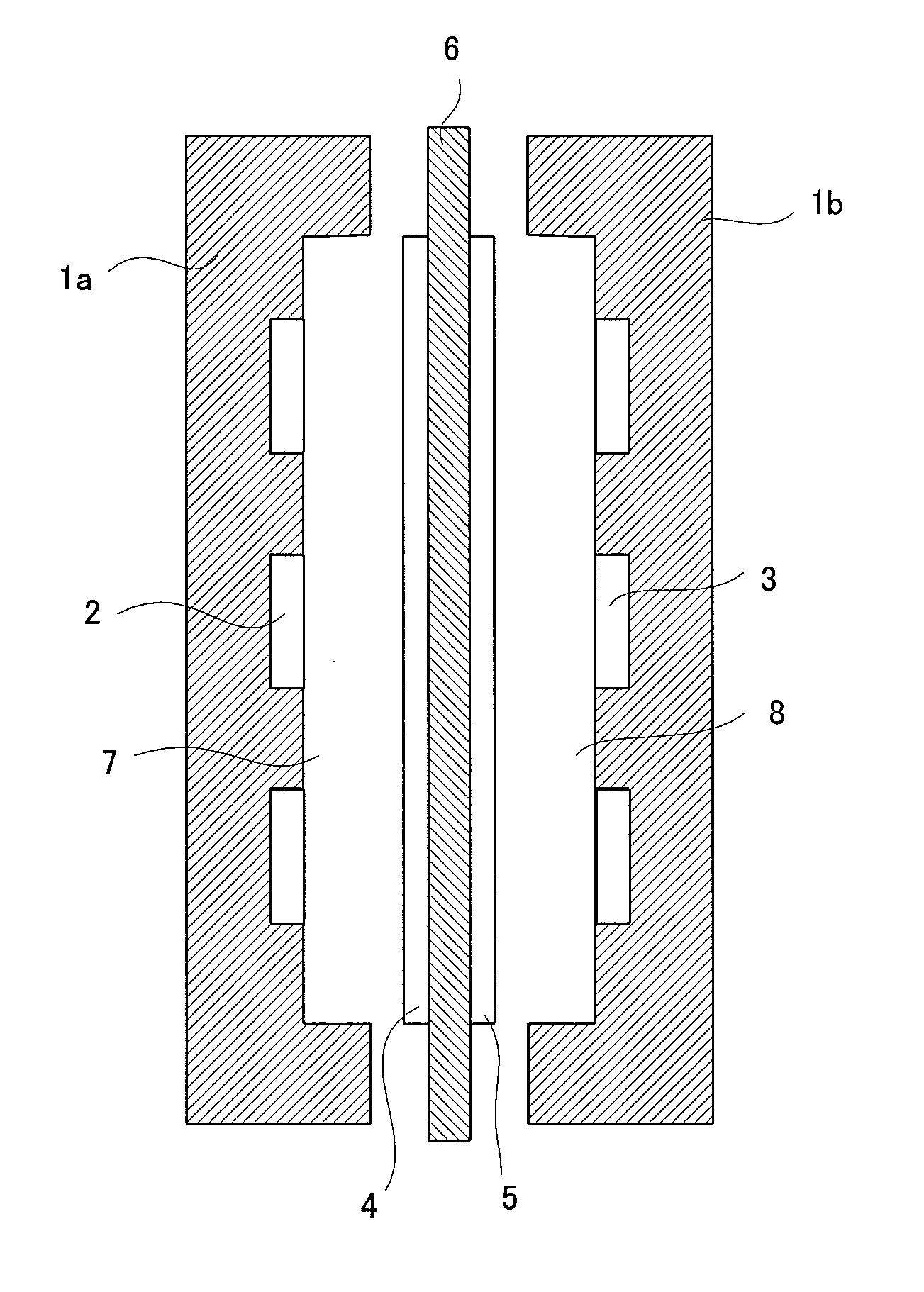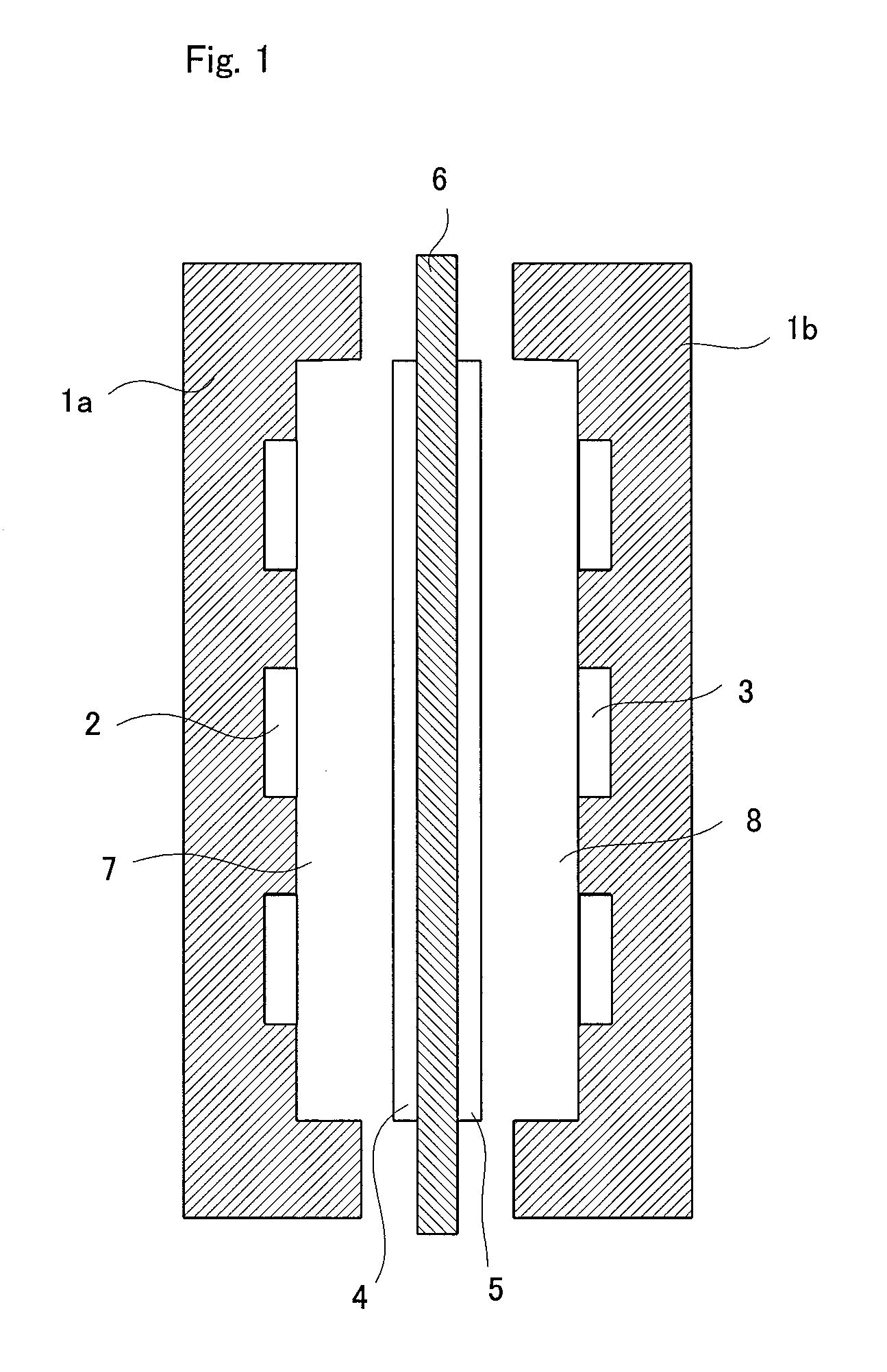Separation membrane for fuel cell, and method for production thereof
- Summary
- Abstract
- Description
- Claims
- Application Information
AI Technical Summary
Benefits of technology
Problems solved by technology
Method used
Image
Examples
production example 1
[0213]As shown in Table 1, there was prepared a monomers composition comprising 100 mass parts of chloromethylstyrene, 3 mass parts (3.5 mol % of the total polymerizable monomers) of divinylbenzene, 5 mass parts of a polyethylene glycol diepoxide (molecular weight: 400) and 5 mass parts of tert-butyl peroxyethylhexanoate. In this monomers composition was immersed, at 25° C. for 10 minutes under atmospheric pressure, a porous membrane (thickness: 25 μm, porosity: 37%, average pore diameter: 0.03 μm) made of a polyethylene (PE, weight-average molecular weight: 250,000) to infiltrate the monomers composition into the porous membrane.
[0214]The porous membrane was taken out from the monomers composition and covered, at the both sides, with a polyester film (a peeling material) of 100 μm in thickness. Then, the covered porous membrane was heated at a nitrogen pressure of 0.3 MPa at 80° C. for 5 hours to polymerize the infiltrated monomers composition.
[0215]The membrane-shaped material obt...
production examples 2 to 3
[0217]Anion-exchange membranes were obtained in the same manner as in Production Example 1 except that the monomers composition and porous membrane of Production Example 1 were changed to those shown in Table 1. The anion-exchange membranes were measured for ion exchange capacity, water content, membrane resistance and membrane thickness. The results are shown in Table 2.
production example 4
[0218]100 mass parts of 4-vinylpyridine, 5 mass parts (3.9 mol % of the total polymerizable monomers) of divinylbenzene and 5 mass parts of tert-butyl peroxyethylhexanoate were mixed to prepare a monomers composition. In this monomers composition was immersed, at 25° C. for 10 minutes under atmospheric pressure, a porous membrane (thickness: 25 μm, porosity: 37%, average pore diameter: 0.03 μm) made of a polyethylene (PE, weight-average molecular weight: 250,000) to infiltrate the monomers composition into the porous membrane.
[0219]The porous membrane was taken out from the monomers composition and covered, at the both sides, with a polyester film (a peeling material) of 100 μm in thickness. Then, the covered porous membrane was heated at a nitrogen pressure of 0.3 MPa at 80° C. for 5 hours to polymerize the infiltrated monomers composition. The membrane-shaped material obtained was immersed in a 1:4 mixture of methyl iodide and methanol at 30° C. for 24 hours to obtain a quaternary...
PUM
| Property | Measurement | Unit |
|---|---|---|
| Temperature | aaaaa | aaaaa |
| Percent by mass | aaaaa | aaaaa |
| Fraction | aaaaa | aaaaa |
Abstract
Description
Claims
Application Information
 Login to View More
Login to View More - R&D
- Intellectual Property
- Life Sciences
- Materials
- Tech Scout
- Unparalleled Data Quality
- Higher Quality Content
- 60% Fewer Hallucinations
Browse by: Latest US Patents, China's latest patents, Technical Efficacy Thesaurus, Application Domain, Technology Topic, Popular Technical Reports.
© 2025 PatSnap. All rights reserved.Legal|Privacy policy|Modern Slavery Act Transparency Statement|Sitemap|About US| Contact US: help@patsnap.com


